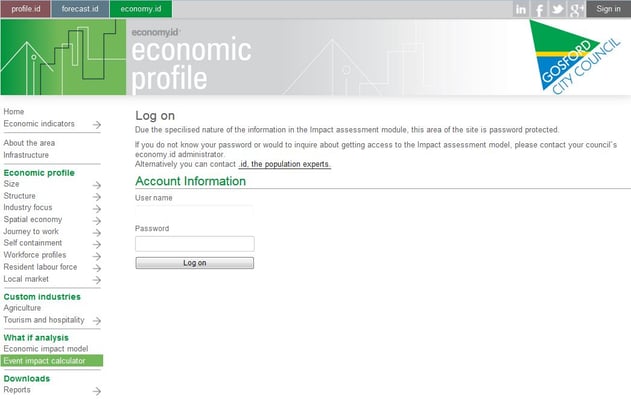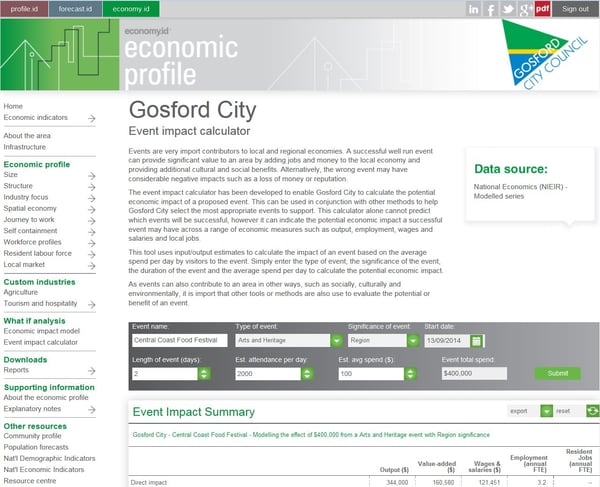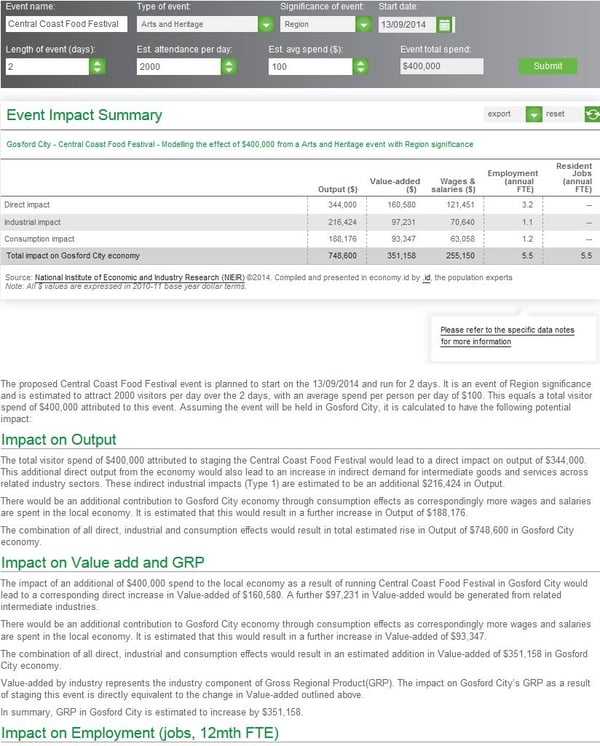Events are very important contributors to local and regional economies. A successful well run event can provide significant value to an area by adding jobs and money to the local economy and providing cultural and social benefits. Alternatively, the wrong event may have negative impacts such as a loss of money or reputation. Councils are often approached to support events in their local community. How do they decide which ones to support? .id has launched an Event Impact Calculator to help.

What is an Event Impact Calculator (EIC)?
In conjunction with NIEIR, the team at .id have developed the Event Impact Calculator (EIC) to help councils review proposals for events in their local area to determine which ones to supports.
The EIC uses input-output estimates to calculate the potential economic impact of an event. Based the length of an event, the number of visitors, the average visitor spend per day, and the type of event, the EIC calculates the impact a successful event may have across a range of economic measures such as output, value add, employment, wages and salaries and local jobs. The calculator alone cannot predict which events will be successful, however it can indicate the potential economic benefit the event may contribute to the local economy.
Why use an Event Impact Calculator?
Estimating the potential economic benefit of an event before it has been held, or calculating the economic impact of an event once it is over can be a very time consuming and costly exercise. This can create a significant dilemma for local governments. It is very important councils support the local economy and community by encouraging a range of events to be held in the local area. However the cost in terms of dollars and human resources in assessing which events to support, and then investing in those events can be very significant, and in some cases negate many of the positive impacts the event may have. Therefore evaluating which events to support in a timely and cost effective way is critical to ensure the most appropriate events are supported.
Clearly the size of the event will determine the how much effort it is worth making to determine the benefit of the event. If Apple Inc. approaches your council to propose holding the international launch of the next iPhone in your local government area it would be worth contributing considerable resources to estimating the benefits and costs to the local community. However councils can receive many requests to support smaller events in the LGA. The right combination of smaller events can be very beneficial and councils need some sort of review to decide which ones they should support and how much investment is reasonable. These are the types of events the EIC has been designed for.
As events can also contribute to an area in other ways, such as socially, culturally and environmentally, it is important that other tools or methods are also used to evaluate the potential or benefit of an event. The calculator cannot determine things like the demand for the event, the quality of the event material or the expertise of the event organiser. Therefore it can cannot be stressed strongly enough the need to use other methods in conjunction with EIC to select which events to support and the appropriate level of support to provide.
How to use the Event Impact Calculator?
The EIC is accessible for every local government in Australia that subscribes to the full version of economy.id. As this information can be sensitive and requires a reasonable level knowledge to interpret the results, the tool has been placed behind a password so access can be managed by each council. To get the user name and password please contact the relevant officer at each council.

Access to the EIC is via a link in the left hand menu of each economy.id site. Once you have opened the EIC using your username and password, simply enter the type of event, the significance of the event, the duration of the event and the average spend per day in the control panel. Press the submit button once you have finished entering the relevant information to calculate the potential economic impact of the event.

Results will be displayed in the table below the control panel and a written report is displayed below the table.

If you would like a copy of the report click the PDF button at the top of the page. The table can also be exported to Excel or word using the export button in the top right hand corner of the table.
Where can I get help?
If you would like any assistance using the EIC or interpreting the outputs, please don’t hesitate to contact us here at .id via info@id.com.au or 03 9417 2205.













